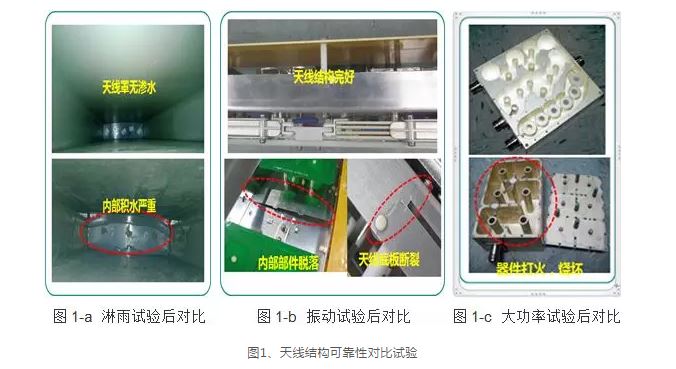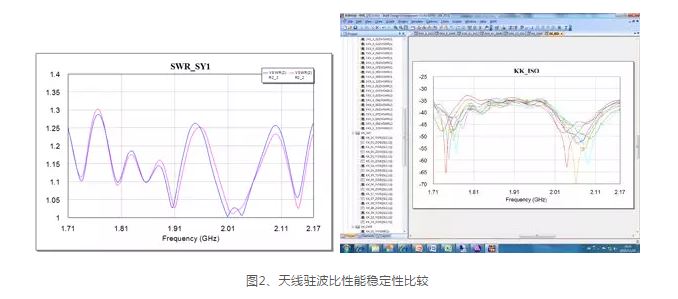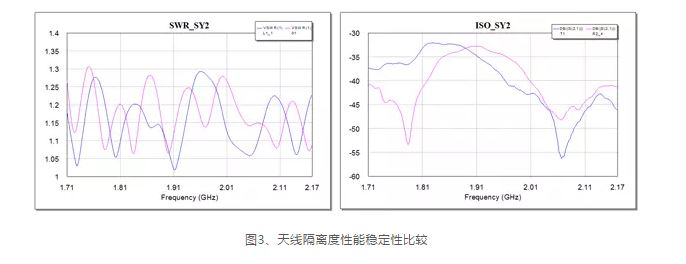1. Introduction
With the continuous development of mobile communication, mobile communication antenna has experienced the development process from single polarization antenna, dual polarization antenna to smart antenna, MIMO antenna and even large-scale array antenna. After the great development of 4G, China Mobile now has about 1.5 million base stations, and the quality of antenna feeds is uneven. As the perception organ of mobile communication network, antenna is more and more complex and important in the network. Although antenna investment accounts for a small proportion (only about 3% of base station investment), more than 40% of network failures are caused by antenna feed system. The degradation of antenna-feed system quality will lead to poor coverage performance or interference problems. As a complex passive product, antenna is difficult to monitor in the network.
The antenna-feed system problems are manifested in many ways, such as: after two or three years of using the antenna in the network, the network coverage performance has been significantly reduced, the intermodulation interference is becoming more and more serious; the standing wave ratio alarm in rainstorm; the standing wave ratio alarm in windy weather; the same type of antenna used in the same manufacturer in the same network performance is very different, and so on. These phenomena show that the reliability of the supplier's products is not high, the quality of hidden dangers, can not meet the requirements of product life indicators. How to judge? This is related to the consistency, stability and reliability of the antenna.
2. Reliability of antennas
In general, product reliability refers to the ability or possibility of components, products and systems to perform specified functions without failures within a certain period of time and under certain conditions. Reliability of products can be evaluated by reliability, failure rate and average failure free interval. Environmental reliability refers to the ability of a product to perform a specified function under specified conditions and within a specified time. In the process of design and application, the product is constantly affected by its own and external climatic environment and mechanical environment, and still needs to be able to work normally, which requires testing equipment to verify it.
Reliability includes three elements: durability, maintainability and design reliability. Durability refers to the fault free or service life of a product. Maintainability means that when a product fails, it can be quickly and easily removed through maintenance or repair.
Design reliability is the key to product quality. Because of the complexity of man-machine system and the possible errors in operation and the influence of operating environment, the possibility of errors still exists. Therefore, the ease of use and operation of the product must be fully considered when designing. Design reliability. Therefore, reliability is an important quality index, but the qualitative description is not enough. It must be quantified in order to describe and compare accurately. Quantitative representation of reliability has its own characteristics, and it is difficult to represent it completely by a characteristic quantity due to different use occasions.
The reliability test of antenna products can be judged by a series of tests. Reliability test is an important means to investigate, analyze and evaluate the reliability of antenna products. Reliability test of antenna includes high and low temperature test, rain test, vibration test, impact test, collision test, vehicle transport test, wind load test, ice test and power test. The reliability of antenna product structure can be verified through environmental tests. As shown in Figure 1, the antennas satisfying the reliability requirements and the antennas not satisfying the comparison test results after the rain test, vibration test and high power test are carried out.

It can be seen from the diagram that the antenna with poor reliability can be checked by environmental test, and the reliability of antenna product design, material and process can be checked by environmental test.
3. Stability of antenna performance
Product stability refers to the ability of a product to keep its characteristics constant over time, usually referring to the ability of product characteristics to change over time. Stability can be quantitatively characterized, mainly by determining the relationship between characteristics and time. Stability is very important. How can we know if the system is stable?
The stability and reliability of antenna products are inseparable. A relatively simple method to judge the stability of antenna products is to judge the reliability of antenna performance by the coincidence of index curve before and after reliability test. The study found that:
(1) Radiation parameters are insensitive to process and circuit, while circuit parameters are sensitive to circuit and process, which can easily affect circuit parameters in production process, especially in repeated debugging.
(2) Among the circuit parameters, the intermodulation order is too small, and it is sensitive to test methods, test equipment and environment, so it is not suitable for statistical evaluation.
(3) the circuit parameters are low on the test site and can be tested on the spot. The radiation parameters have high requirements for the reflection and shielding characteristics of the testing site, and can not be tested on the spot.
Therefore, it is suggested to select the standing wave ratio and isolation of the circuit parameters as the stability characterization parameters of the antenna performance.
As shown in Fig. 2, the VSWR curves of the antenna in the left-hand plot are in good agreement with those of the antenna before and after the vibration test, but the VSWR curves of the antenna in the right-hand plot are still qualified after the vibration test (VSWR < 1.5). It is considered that the antenna has poor stability.
Fig. 3 compares the performance and stability of the antenna before and after the sprinkling test. It can be seen that the stability of the antenna isolation is better and the right picture is worse.

Antennas with poor antenna stability can often pass the network access test, but the quality of the antenna often decreases due to changes in the natural environment during the service cycle, resulting in the decline of network quality, which is easy to occur in the introduction.
4. Consistency of antenna performance
The consistency of antenna performance refers to the consistency of parameters of the same type of antenna products, which can be judged by comparing the approximation of index curves of several similar products. As shown in Figure 4, the VSWR curves of multiple antennas of the same type have the same trend and smaller deviation, which indicates that the VSWR performance of the antennas of the same type is consistent; the VSWR curves of multiple antennas of the right figure are irregular and cluttered, indicating that the VSWR curves of the antennas of this type are consistent. Bobbi has poor performance consistency. Fig. 5 shows the consistency of antenna isolation performance, and the same left-hand pattern antenna has better consistency than the right-hand pattern. Therefore, it can be considered that the performance of the left antenna is better than that of the right antenna.

5. Conclusion
Antenna belongs to broadband, low Q passive products. The material structure will not be restored after damage in the reliability test process. The frequency change caused by thermal expansion and cold shrinkage of materials in high and low temperature test process is neglected. The change of test index after contrast test can reflect the stability of electrical performance index. It does not need to be tested in reliability test. Process test indicators. Intermodulation index of antenna is sensitive to manufacturing process and structure stability. Dynamic test can be taken to verify product stability indirectly.
In short, the reliability, stability and consistency of the antenna have an important impact on the mobile communication network. It is important to measure and control the antenna performance before the antenna products enter the network.